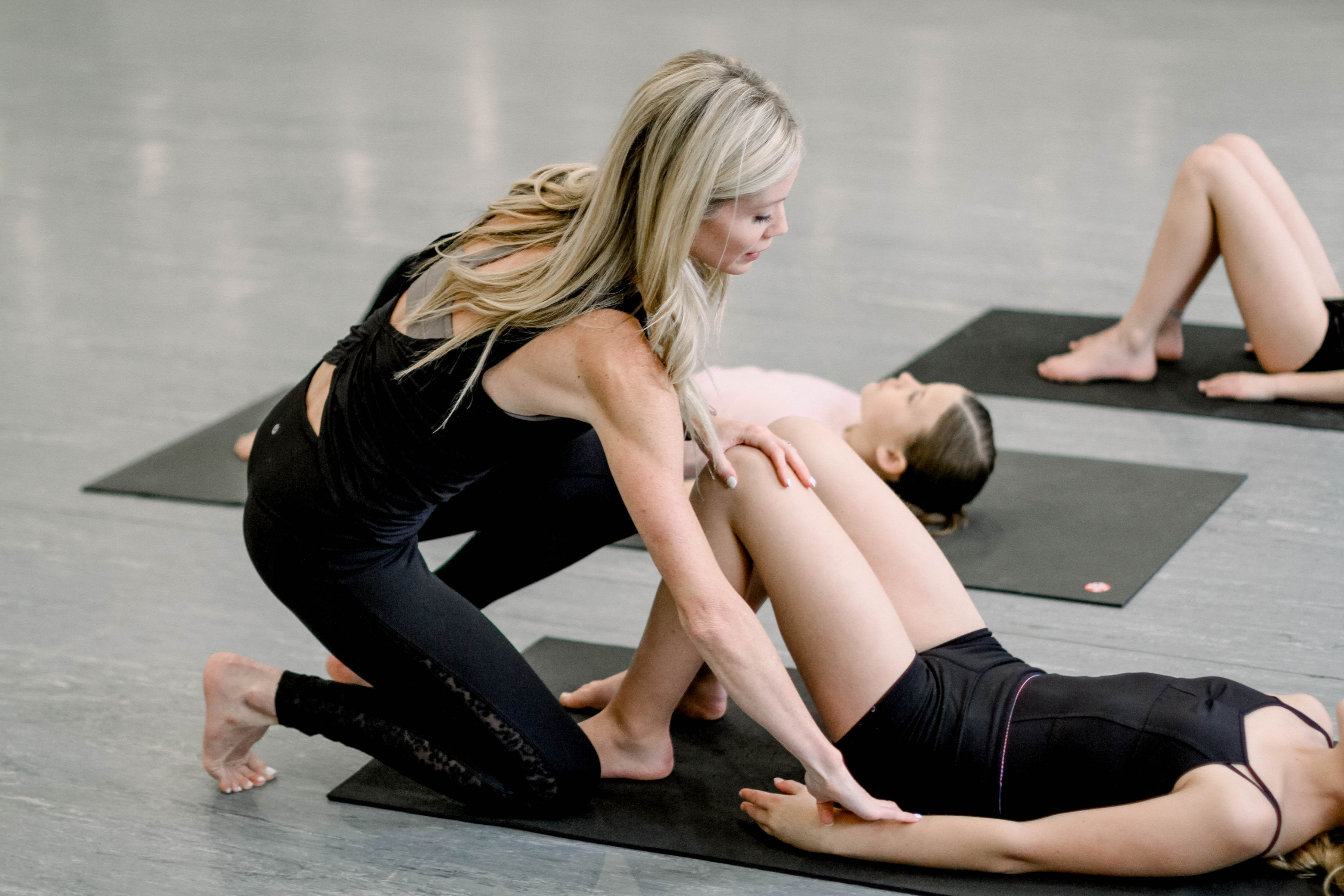Muscular imbalances and postural deviations are SO common in the dance world. Why? Dance involves a lot of repetitive movement with an emphasis on certain muscular groups, i.e. the deep 6 external hip rotators, hip flexors, and hamstrings. This means your dancers could be risking injury without proper stretching and technique!
Over time this causes certain muscles to elongate and others to shorten. And because muscles attach to bones via tendons, they are able to pull bones in certain directions. Often, the muscles that have shortened pull the bones away from a neutral joint position.
If the dancer’s “neutral” joint position is actually a deviation from neutral they will continue to return to that position when resting- this means anytime they are standing, sitting or dancing without consciously trying to correct their posture.
Why? Because the deviation has become their new “norm”. And the most efficient way to move away from their new “norm” and restore neutral, is to stretch.
SO, if being efficient is your thing, you’ll want to stretch to restore and strengthen to maintain!
But before we can get to fixing…it’s important to do some educating!
Let’s start with three VERY common postural deviations in the dance world:
[formfuse id=”908″]
- The Anterior Pelvic Tilt, aka, “the banana butt”
- This involves flexion of the hips and increased extension of the lumbar spine.
- This specifically tightens the hip flexors and lower back.
- This specifically elongates the hamstrings and abdominals.
- This specifically limits…pretty much everything in dance, especially hip extension, i.e. an arabesque!
- The Posterior Pelvic Tilt, aka “the tuck”
- This involves extension of the hips and decreased extension of the lumbar spine.
- This specifically tightens your hamstrings.
- This specifically elongates your hip flexors.
- This specifically limits…A LOT, especially hip flexion, i.e. leg extensions.
- The Lateral Pelvic Tilt, aka, “the hip hiker”
- This involves one hip lifting higher than the other.
- This specifically tightens your side body and outer hip.
- This specifically elongates the opposite side body and outer hip.
- This specifically limits…upper body mobility and balance, i.e. pirouettes.
So, how do you correct common postural deviations in dancers? First, you STRETCH. You spend a little extra time stretching muscles that have tightened to return the joint to neutral.
Then you STRENGTHEN. When you do it the other way around, you are making things harder than they need to be and fighting a battle you won’t win. Let’s go for the win…
Watch our video, The Benefits of A Neutral Pelvis and Spine, for a more in depth explanation of the specifics of each postural deviation and how to correct it. It will also provide you additional information regarding what a neutral pelvis and spine refers to and the benefits of each.
Ready to completely overhaul your studio’s stretching curriculum? Check out how it will transform your studio and get a FREE Trial!
Looking for more tips on avoid risking injury to your dancers? Check out the following articles:
The “Expert Advice from Christine Jones” series is brought to you by mUvmethod™ and TutuTix.





